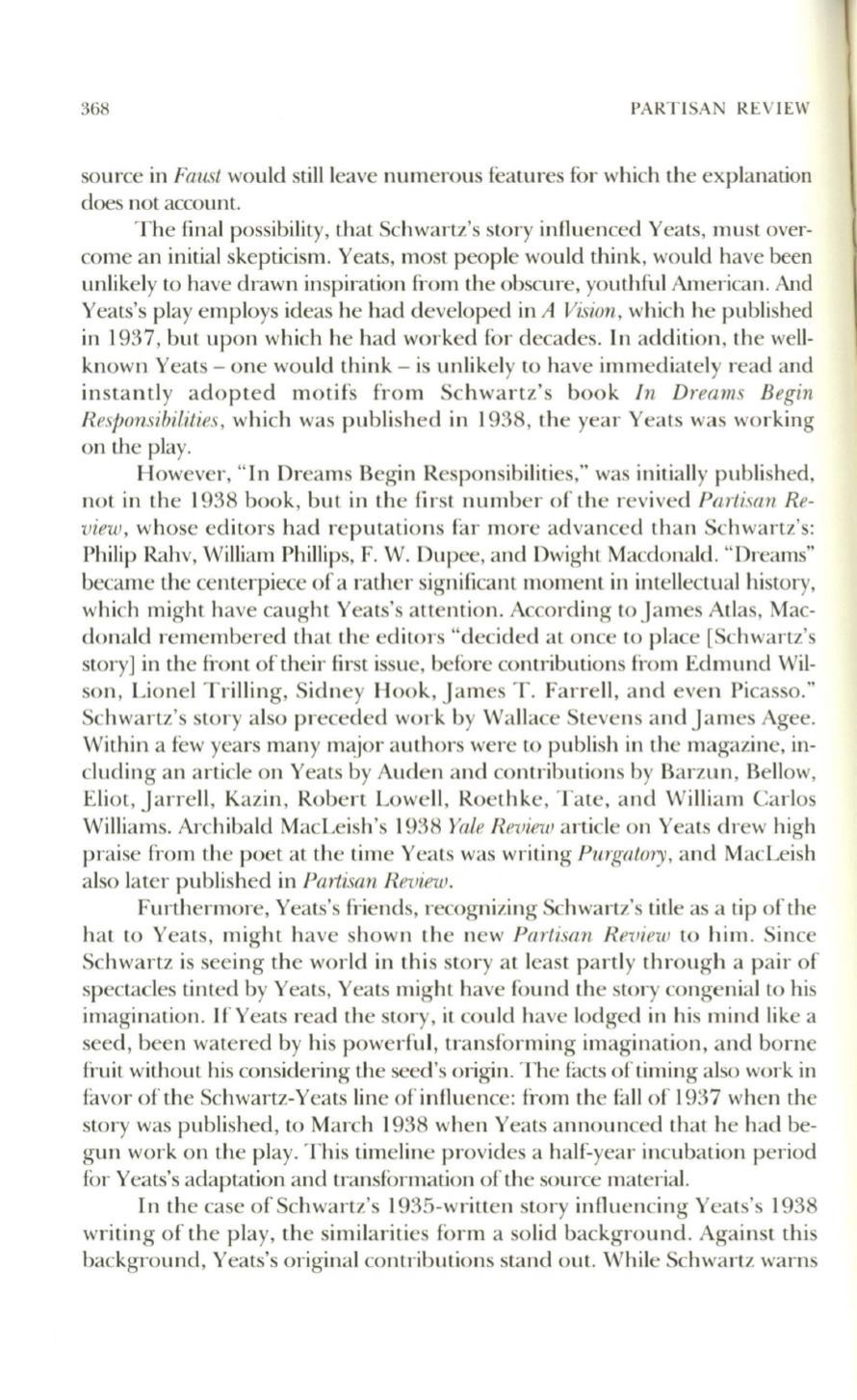
368
PARTISAN REVIEW
source in
Faust
would still leave numerous features for which the explanation
does not account.
The final possibility, that Schwartz's story influenced Yeats, must over–
come an initial skepticism. Yeats, most people would think, would have been
unlikely to have drawn inspiration from the obscure, youthful American . And
Yeats's play employs ideas he had developed in
A Vision,
which he published
in 1937, but upon which he had worked for decades.
In
addition, the well–
known Yeats - one would think - is unlikely to have immediately read and
instantly adopted motifs from Schwartz's book
In Dreams Begin
Responsibilities,
which was published in 1938, the year Yeats was working
on the play.
However, "In Dreams Begin Responsibilities," was initially published,
not in the 1938 book, but in the first number of the revived
Partisan Re–
view,
whose editors had reputations far more advanced than Schwartz's:
Philip Rahv, William Phillips, F. W. Dupee, and Dwight Macdonald. "Dreams"
became the centerpiece of a rather significant moment in intellectual history,
which might have caught Yeats's attention. According to James Atlas, Mac–
donald remembered that the editors "decided at once to place [Schwartz's
story] in the front oftheir first issue, before contributions from Edmund Wil–
son, Lionel Trilling, Sidney Hook, James
T.
Farrell, and even Picasso. "
Schwartz's story also preceded work by Wallace Stevens and James Agee.
Within a few years many major authors were to publish in the magazine, in–
cluding an article on Yeats by Auden and contributions by Barzun , Bellow,
Eliot, Jarrell , Kazin, Robert Lowell, Roethke, Tate, and William Carlos
Williams. Archibald MacLeish's 1938
Yale Review
article on Yeats drew high
praise from the poet at the time Yeats was writing
Purgatory,
and MacLeish
also later published in
Partisan Review.
Furthermore, Yeats's friends , recognizing Schwartz's title as a tip of the
hat to Yeats, might have shown the new
Partisan R eview
to him. Since
Schwartz is seeing the world in this story at least partly through a pair of
spectacles tinted by Yeats, Yeats might have found the story congenial to his
imagination . If Yeats read the story, it could have lodged in his mind like a
seed, been watered by his powerful, transforming imagination, and borne
fruit without his considering the seed's origin. The facts of timing also work in
favor of the Schwartz-Yeats line of influence: from the fall of 1937 when the
story was published, to March 1938 when Yeats announced that he had be–
gun work on the play. This timeline provides a half-year incubation period
for Yeats's adaptation and transformation of the source material.
In the case of Schwartz's 1935-written story influencing Yeats's 1938
writing of the play, the similarities form a solid background. Against this
background , Yeats's original contributions stand out. While Schwartz warns


